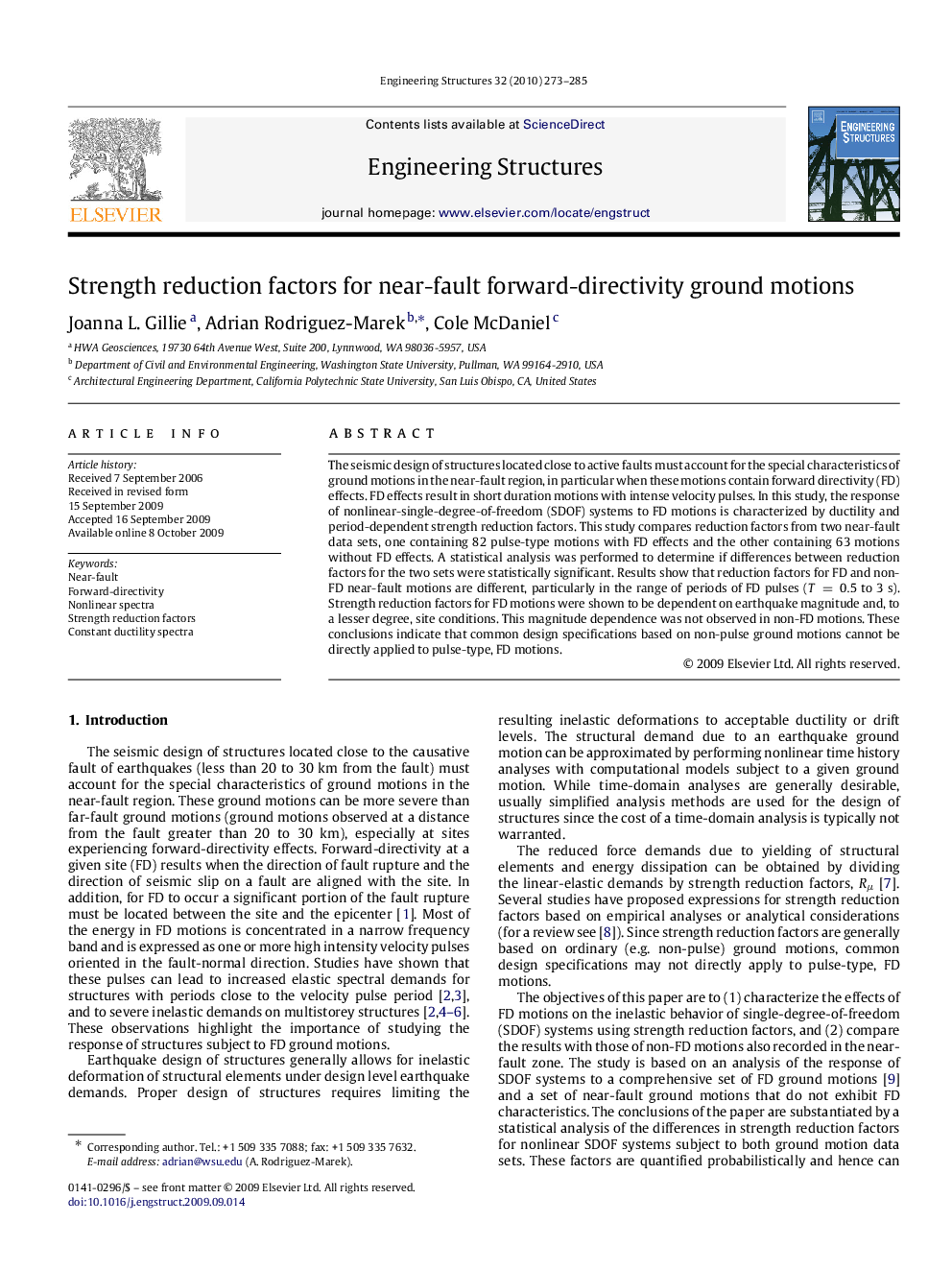| Article ID | Journal | Published Year | Pages | File Type |
|---|---|---|---|---|
| 268700 | Engineering Structures | 2010 | 13 Pages |
The seismic design of structures located close to active faults must account for the special characteristics of ground motions in the near-fault region, in particular when these motions contain forward directivity (FD) effects. FD effects result in short duration motions with intense velocity pulses. In this study, the response of nonlinear-single-degree-of-freedom (SDOF) systems to FD motions is characterized by ductility and period-dependent strength reduction factors. This study compares reduction factors from two near-fault data sets, one containing 82 pulse-type motions with FD effects and the other containing 63 motions without FD effects. A statistical analysis was performed to determine if differences between reduction factors for the two sets were statistically significant. Results show that reduction factors for FD and non-FD near-fault motions are different, particularly in the range of periods of FD pulses (T=0.5T=0.5 to 3 s). Strength reduction factors for FD motions were shown to be dependent on earthquake magnitude and, to a lesser degree, site conditions. This magnitude dependence was not observed in non-FD motions. These conclusions indicate that common design specifications based on non-pulse ground motions cannot be directly applied to pulse-type, FD motions.
